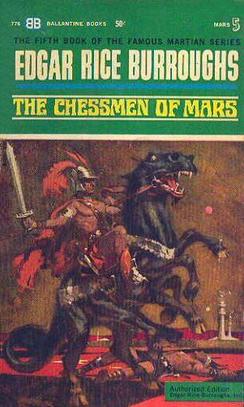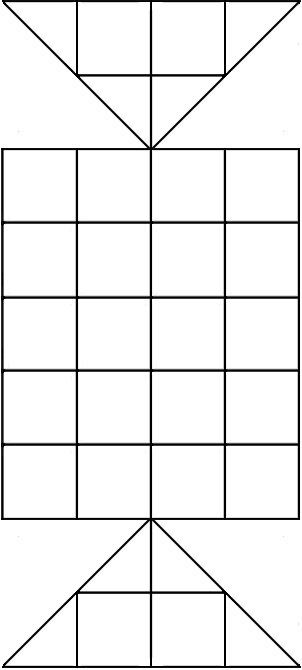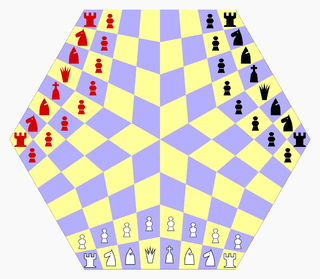
Chaturanga is an ancient Indian strategy board game. It is first known from India around the seventh century CE, but its roots may date 5000 years back, to the Indus Valley Civilization.
A fairy chess piece, variant chess piece, unorthodox chess piece, or heterodox chess piece is a chess piece not used in conventional chess but incorporated into certain chess variants and some chess problems. Compared to conventional pieces, fairy pieces vary mostly in the way they move, but they may also follow special rules for capturing, promotions, etc. Because of the distributed and uncoordinated nature of unorthodox chess development, the same piece can have different names, and different pieces can have the same name in various contexts as it can be noted in the list of fairy chess pieces.

Sittuyin, also known as Burmese chess, is a strategy board game created in Myanmar. It is a direct offspring of the Indian game of chaturanga, which arrived in Myanmar in the 8th century thus it is part of the same family of games such as chess, and shogi. Sit is the modern Burmese word for "army" or "war"; the word sittuyin can be translated as "representation of the four characteristics of army"—chariot, elephant, cavalry and infantry.

Jungle or dou shou qi is a modern Chinese board game with an obscure history. A British version known as "Jungle King" was sold in the 1960s by the John Waddington company. The game is played on a 7×9 board and is popular with children in the Far East.

Ludus latrunculorum, latrunculi, or simply latrones was a two-player strategy board game played throughout the Roman Empire. It is said to resemble chess or draughts, but is generally accepted to be a game of military tactics. Because of the scarcity of sources, reconstruction of the game's rules and basic structure is difficult, and therefore there are multiple interpretations of the available evidence.

Jetan, also known as Martian chess, is a chess variant first published in 1922. It was created by Edgar Rice Burroughs as a game played on Barsoom, his fictional version of Mars. The game was introduced in The Chessmen of Mars, the fifth book in the Barsoom series. Its rules are described in Chapter 2 and in the Appendix of the book, with an actual game partly described in Chapter 17.
Yari shogi is a modern variant of shogi ; however, it is not Japanese. It was invented in 1981 by Christian Freeling of the Netherlands. This game accentuates shogi’s intrinsically forward range of direction by giving most of the pieces the ability to move any number of free squares orthogonally forward like a shogi lance. The opposite is true of promoted pieces which can move backward with the same power.
Catch the Hare is a two-player abstract strategy board game from Europe, and perhaps specifically from Spain. It is a hunt game, and since it uses a standard Alquerque board from the game Alquerque de Doze, it is specifically a tiger hunt game. In some variants, some or all of the diagonal lines are missing which makes it difficult to classify as a tiger game in general. One hare is going up against ten to twelve opponents(hunters or hounds). The hare is the "tiger" in this hunt game which is prey and predator at the same time. The hare can capture the opponents by leaping over them. The opponents attempt to surround and trap the hare.
Zamma is a two-player abstract strategy game from Africa. It is especially played in Mauritania. The game is similar to alquerque and draughts. Board sizes vary, but they are square boards, such as 5x5 or 9x9 square grids with left and right diagonal lines running through several intersection points of the board. One could think of the 5x5 board as a standard alquerque board, but with additional diagonal lines, and the 9x9 board as four standard alquerque boards combined, but no additional diagonal lines are added. The initial setup is also similar to alquerque, where every space on the board is filled with each player's pieces except for the middle point of the board. Furthermore, each player's pieces are also set up on their respective half of the board. The game specifically resembles draughts in that pieces must move in the forward directions until they are crowned "Mullah" which is the equivalent of the king in draughts. The Edhayam can move in any direction. In Mauritania, the black pieces are referred to as men, and the white pieces as women. In the Sahara, short sticks represent the men, and camel dung represent the women.

Kharbaga is a two-player abstract strategy game from North Africa. In a way, it is a miniature version of Zamma; however, there are more diagonal lines per square on the board as compared to Zamma. The game is considered part of the Zamma family. The game is also similar to Alquerque and draughts. The board is essentially an Alquerque board with twice the number of diagonal lines or segments allowing for greater freedom of movement. The initial setup is also similar to Alquerque, where every space on the board is filled with each player's pieces except for the middle point of the board. Moreover, each player's pieces are also set up on each player's half of the board. The game specifically resembles draughts in that pieces must move in the forward directions until they are crowned "Mullah" which is the equivalent of the King in draughts. The Mullah can move in any direction.
Dablo is a family of two-player strategy board games of the Sámi people. Different variants of the game have been played in different parts of Sápmi.
High jump is a two-player strategy board game from Somalia. It is related to draughts and alquerque as pieces hop over one another for capture; however, pieces move and capture orthogonally and not diagonally. Moreover, the game is played on a 5×5 square board. A feature of high jump is that the central square offers a kind of sanctuary; a piece occupying the central square cannot be hopped over and captured. The same board is used in the game Seega.
Tuknanavuhpi' is a two-player abstract strategy board game played by the Hopi Native American Indians of Arizona, United States. It is also played in many parts of Mexico. The game was traditionally played on a slab of stone with the board pattern etched on it. Tukvnanawopi resembles draughts and Alquerque. Players attempt to capture each other's pieces by hopping over them. It is not known when the game was first played; however, the game was published as early as 1907 in Stewart Culin's book Games of the North American Indians Volume 2: Games of Skill.
Awithlaknannai Mosona is a two-player strategy board game from the Zuni Native American Indian tribe of New Mexico, United States. It is unknown how old the game is. The game was described by Stewart Culin in his book "Games of the North American Indians Volume 2: Games of Skill" (1907). In this book, it was named Awithlaknan Mosona. Awithlaknannai Mosona resembles another Zuni board game called Kolowis Awithlaknannai with few minor differences. The former having a smaller board, and depending upon the variant, it also has less lines joining the intersection points. The rules are the same. Awithlaknannai Mosona belongs to the draughts and Alquerque family of games as pieces hop over one another when capturing. It is actually more related to Alquerque, since the board is made up of intersection points and lines connecting them. It is thought that the Spanish had brought Alquerque to the American Southwest, and Awithlaknannai Mosona may have been an evolution from Alquerque. However, in Stewart Culin's 1907 book, the Zunis claim that they had adopted a hunt game from Mexico similar to Catch the Hare and the Fox games of Europe, and transformed it into Awithlaknannai Mosona. In these games, one player has more pieces over the other, however, the other player's piece has more powers. The Zuni's equalized the numbers of pieces and their powers, and also may have transformed the board making its length far exceed its width. Diagonal lines also replaced orthogonal lines altogether. However, the hunt game from Mexico may have used an Alquerque board even though the game mechanics of their new game, Awithlaknannai Mosona, were completely different.
Indian and jackrabbits is a two-player abstract strategy board game from the Tiwa tribe of Taos, New Mexico. A similar game with a slightly different board is also played by the Tohono O'odham tribe of Arizona. From the outset, these games look like hunt games similar to Catch the Hare, the Fox games of Europe, and the tiger and leopard games of Asia, because they use very similar boards, and the game mechanics are the same, and the number of pieces each player controls is different. However, they are not the same games, because the goals are completely different. The goal of the one Indian is to capture just one of the twelve jackrabbits. The goal of the jackrabbits is to move themselves safely onto the other side of the board mirroring their initial positions.
Tiger and buffaloes is a two-player abstract strategy board game from Myanmar. It belongs to the hunt game family. The board is a 4x4 square grid, where pieces are placed on the intersection points and move along the lines. It is one of the smallest hunt games. Three tigers are going up against eleven buffaloes. The tigers attempt to capture as many of the buffaloes by the short leap as in draughts or Alquerque. The buffaloes attempt to hem in the tigers.
Sua Ghin Gnua is a two-player abstract strategy board game from Thailand, formerly known as Siam. Another name for the game is Tigers and Oxen. It is a hunt game played on a 5x5 square grid with only orthogonal lines. One player plays the three tigers, and the other player plays the twelve oxen. The board is empty in the beginning. Players first drop their pieces onto the board, and then are able to move them. The tigers can capture the oxen by the short leap as in draughts and Alquerque, but the oxen attempt to elude and at the same time hem in the tiger. Sua Ghin Gnua most resembles the tiger hunt games such as Bagh-Chal, Rimau-rimau, Main Tapal Empat, Catch the Hare, and Adugo since they all use a 5 x 5 square grid. But tiger games technically consist of a standard Alquerque board which is a 5 x 5 square grid with several diagonal lines criss-crossing through it which are completely missing in Sua Ghin Gnua. There are however some variants of Catch the Hare which have missing diagonal lines also. Another game that resembles Sua Ghin Gnua is from Myanmar called Tiger and Buffaloes which is a hunt game consisting of a 4 x 4 square grid with no diagonal lines. Myanmar happens to border Thailand geographically so there might be a historical connection between the two games. Another game from Myanmar is Lay Gwet Kyah that is presumed to be similar to Sua Ghin Gnua. Sua Ghin Gnua was briefly described by Stewart Culin, in his book Chess and Playing Cards: Catalogue of Games and Implements for Divination Exhibited by the United States National Museum in Connection with the Department of Archaeology and Paleontology of the University of Pennsylvania at the Cotton States and International Exposition, Atlanta, Georgia 1895 (1898). It's also briefly mentioned by H.J.R. Murray in his book A History of Chess (1913). It was also described by R.C. Bell, in his book Board and Table Games from Many Civilizations (1969).

Astar is a two-player abstract strategy board game from Kyrgyzstan. It is a game similar to draughts and Alquerque as players hop over one another's pieces when capturing. However, unlike draughts and Alquerqe, Astar is played on 5×6 square grid with two triangular boards attached on two opposite sides of the grid. The board somewhat resembles those of Kotu Ellima, Sixteen Soldiers, and Peralikatuma, all of which are games related to Astar. However, these three games use an expanded Alquerque board with a 5×5 square grid with diagonal lines. Astar uses a 5×6 grid with no diagonal lines.

Chesquerque is a chess variant invented by George R. Dekle Sr. in 1986. The game is played on a board composed of four Alquerque boards combined into a square. Like Alquerque, pieces are positioned on points of intersection and make their moves along marked lines ; as such, the board comprises a 9×9 grid with 81 positions (points) that pieces can move to.

Three-man chess is a chess variant for three players invented by George R. Dekle Sr. in 1984. The game is played on a hexagonal board comprising 96 quadrilateral cells. Each player controls a standard army of chess pieces.









